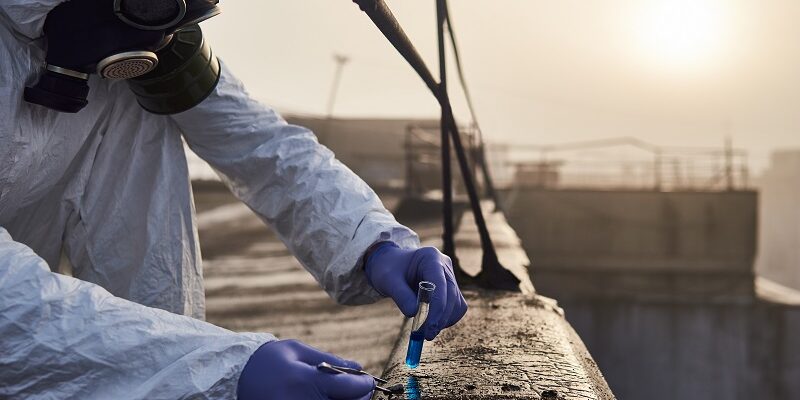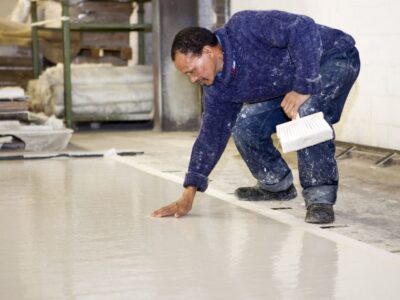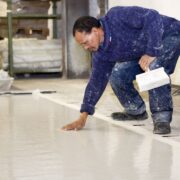Ancient Discoveries and Early Uses
The history of asbestos stretches back thousands of years. Ancient civilizations, including the Greeks and Romans, discovered the unique properties of asbestos, such as its resistance to fire and heat. The Greeks even coined the term “asbestos,” meaning “inextinguishable.” They used it in items like lamp wicks and funeral shrouds. However, even back then, they noticed the harmful effects on slaves who mined and worked with the material, describing “lung sickness.” Despite these early warnings, its utility often overshadowed health concerns.
Industrial Revolution and Asbestos Popularity
The Industrial Revolution in the 18th and 19th centuries marked a turning point for asbestos. With the rise of steam engines, turbines, and high-temperature machinery, asbestos became invaluable for insulation and fireproofing. By the late 1800s, commercial asbestos mining had begun, and the material was being mixed with cement and other products for industrial use. Its ability to withstand extreme conditions made it indispensable in factories, ships, and railroads. This period also saw the development of asbestos textiles and insulation, which laid the groundwork for its eventual use in homes.
Introduction to Residential Applications
Asbestos made its way into residential construction in the early 20th century. Homebuilders began incorporating it into products like roofing shingles, siding, and insulation. Its durability, affordability, and fire-resistant qualities made it a popular choice for developers. Asbestos-containing materials became synonymous with modern, “safe” construction, despite growing evidence of its health risks. By the mid-1900s, it was a staple in homes across America, setting the stage for widespread use—and eventual scrutiny—in residential architecture.
The Rise of Asbestos in 20th Century Homes
Widespread Adoption in the 1900s
The 20th century saw asbestos become a household name, quite literally. By the early 1900s, it was everywhere—factories, offices, and homes. Manufacturers loved it for its fire-resistant and insulating properties, and they marketed it hard. It didn’t hurt that it was cheap and easy to get. Asbestos became the go-to material for builders, and its use exploded during this time. From insulating pipes to reinforcing cement, it was considered a miracle material. Even as early as the 1930s, though, whispers of health concerns began to emerge, but they were largely ignored.
Key Products Containing Asbestos
When it came to homes, asbestos wasn’t just in one or two things—it was in a ton of stuff. Some of the most common products included:
- Insulation materials, especially around pipes and boilers.
- Roofing shingles and siding, prized for their durability.
- Floor tiles and adhesives, which were everywhere in mid-century homes.
It wasn’t just the big, obvious things either. Asbestos could be found in textured paints, ceiling tiles, and even some household appliances. It was so widespread that most people didn’t even think twice about it.
Role of Manufacturers in Promoting Asbestos
Here’s the thing: manufacturers knew asbestos was a moneymaker, and they leaned into it hard. They ran ads touting its benefits, from fireproofing to soundproofing. Some companies even branded their products with asbestos-related names to highlight its inclusion. But behind the scenes, there’s evidence that some manufacturers were aware of the health risks much earlier than they let on. Instead of pulling back, they doubled down, ensuring asbestos stayed king in the building world for decades. This aggressive marketing played a huge role in its widespread use, leaving a legacy that’s still being dealt with today.
Health Risks Associated with Asbestos Exposure
Early Medical Discoveries
The harmful effects of asbestos exposure have been known for over a century. In 1899, researchers first identified unusual lung abnormalities in workers exposed to asbestos. By the 1930s, medical journals began publishing studies linking asbestos to severe illnesses, including asbestosis and lung cancer. These early findings were primarily based on occupational exposure, where workers inhaled high concentrations of asbestos fibers daily. Even at this early stage, it was evident that prolonged exposure could lead to life-threatening conditions.
Occupational Hazards and Residential Impact
Most asbestos-related illnesses stem from workplace exposure, particularly in industries like construction, shipbuilding, and manufacturing. Workers in these fields often handled raw asbestos or asbestos-containing materials, unknowingly inhaling tiny, airborne fibers. Over time, these fibers accumulate in the lungs, causing diseases such as mesothelioma, asbestosis, and pleural thickening. However, asbestos wasn’t just an occupational hazard—it also entered homes. Materials like insulation, floor tiles, and roofing contained asbestos, putting residents at risk of secondary exposure. Even minimal exposure in residential settings can lead to long-term health effects, especially as no safe level of asbestos exposure has been established.
Public Awareness and Health Campaigns
Awareness about the dangers of asbestos exposure grew slowly. For decades, manufacturers downplayed the risks, and public health campaigns were minimal. It wasn’t until the 1970s that governments and organizations began educating the public about asbestos-related health concerns. Campaigns highlighted the importance of identifying and safely managing asbestos in homes, schools, and workplaces. Today, advocacy efforts continue to emphasize early detection of asbestos-related diseases and the importance of professional abatement to prevent exposure. Public health initiatives have saved lives, but the legacy of asbestos exposure remains a significant challenge.
Regulatory Actions and Bans on Asbestos
Initial Concerns and Studies
In the early 20th century, the dangers of asbestos began to surface. As early as the 1930s, medical journals linked asbestos exposure to severe health issues like asbestosis and lung cancer. These findings were largely based on studies of workers in industries where asbestos was prevalent. Despite the alarming data, it took decades for these concerns to gain public attention. The lack of immediate action reflected the economic importance of asbestos at the time.
Governmental Policies in the 1970s
The 1970s marked a turning point in asbestos regulation. The U.S. Environmental Protection Agency (EPA) and the Occupational Safety and Health Administration (OSHA) introduced policies to limit asbestos exposure. Key actions included:
- Prohibiting the use of spray-applied asbestos-containing materials.
- Establishing workplace exposure limits to protect employees.
- Mandating warning labels on products containing asbestos.
These measures signaled the beginning of stricter oversight, although asbestos was not fully banned.
Global Efforts to Limit Asbestos Use
While the U.S. made strides in regulating asbestos, other countries took more aggressive steps. By the 1980s and 1990s, many nations, including those in the European Union, implemented outright bans. However, the global response has been uneven. Developing countries continue to use asbestos in construction and manufacturing due to its affordability. This disparity underscores the ongoing challenge of addressing asbestos on a global scale.
For a detailed list of U.S. laws and regulations on asbestos, refer to this comprehensive listing of laws and regulations related to asbestos.
Common Residential Materials Containing Asbestos
Insulation and Pipe Wrapping
One of the most common uses of asbestos in residential buildings was in insulation. Asbestos fibers were mixed into insulation materials to improve fire resistance and durability. This was particularly prevalent in homes built before the 1980s. Pipe wrapping, often found around steam or hot water pipes, also frequently contained asbestos. These materials were valued for their ability to retain heat while reducing the risk of fire. However, over time, insulation and pipe wrapping can become brittle, releasing harmful fibers into the air if disturbed.
Flooring, Roofing, and Wall Systems
Asbestos was widely incorporated into building materials like vinyl floor tiles, roofing shingles, and wall systems. Vinyl tiles often contained asbestos to increase their strength and longevity. Roofing materials, such as asbestos cement shingles, were popular for their weather resistance. Wall systems, including drywall and plaster, sometimes included asbestos for added fireproofing. Homeowners should be cautious, as these materials can release fibers during renovations or demolition.
Vermiculite and Other Hidden Sources
Vermiculite insulation, often used in attics, is another source of asbestos in homes. Much of the vermiculite mined in the U.S. before 1990 was contaminated with asbestos, particularly from sources in Libby, Montana. Other hidden sources include textured paints, ceiling tiles, and even some adhesives. It is essential to assume that any material in older homes could potentially contain asbestos unless tested by a professional.
The Decline of Asbestos Use in Homes
Shifts in Building Practices
By the late 20th century, construction methods began to evolve, steering away from materials containing asbestos. Builders increasingly sought alternatives that were not only safer but also easier to work with. The shift was driven by mounting evidence of asbestos-related health risks, as well as growing public concern over its widespread use. Newer materials like fiberglass insulation and non-asbestos cement products became popular, gradually replacing asbestos-containing components in homes.
Emergence of Safer Alternatives
The development of safer building materials played a crucial role in reducing asbestos use. Manufacturers began producing alternatives that mimicked the durability and heat resistance of asbestos without its harmful effects. Some of the most common replacements included:
- Fiberglass insulation, which offered similar thermal properties.
- Cellulose-based products for fireproofing and insulation.
- Non-asbestos roofing and flooring materials, such as vinyl and rubber composites.
These innovations not only met safety standards but also aligned with the industry’s push for environmentally friendly solutions.
Impact of Legal and Social Pressure
Regulatory action was instrumental in curbing asbestos use. Governments worldwide introduced bans and restrictions, with significant milestones like Denmark’s ban on asbestos for insulation in 1972 and the U.S.’s ban on spray-applied surfacing in 1973. Public awareness campaigns further amplified the urgency for change, pressuring manufacturers to prioritize consumer safety. Social movements, combined with scientific research, created a climate where asbestos was no longer seen as a viable option for modern construction.
Modern-Day Challenges with Asbestos in Older Homes
Identifying Asbestos in Existing Structures
Older homes, especially those built before the 1980s, often harbor asbestos in materials like insulation, floor tiles, and roofing. Spotting asbestos isn’t straightforward, as it’s usually mixed with other materials. Homeowners should avoid guessing and instead rely on professional asbestos inspections to confirm its presence. Trained experts use specialized tools to test for asbestos, ensuring safety during the process. For real estate agents, understanding how asbestos impacts home sales and renovations is critical. Materials like AC ducting and drywall are common culprits, and their presence can influence property value and buyer interest.
Safe Removal and Abatement Practices
Once asbestos is identified, removing it safely becomes the next hurdle. DIY removal is not only dangerous but can also release toxic fibers into the air. Instead, homeowners should:
- Hire licensed abatement professionals who follow strict safety protocols.
- Seal off affected areas to prevent contamination during removal.
- Dispose of asbestos waste according to local regulations.
These steps minimize health risks and ensure compliance with laws. Additionally, during renovations, contractors need to be vigilant about not disturbing hidden asbestos, as even minor damage can pose serious health hazards.
Legal and Financial Implications
Dealing with asbestos in older homes isn’t just a safety concern—it’s also a legal and financial one. Abatement can be costly, with expenses reaching thousands of dollars depending on the extent of contamination. Some states mandate disclosure of asbestos during property sales, which can complicate transactions. For homeowners, it’s wise to plan for these costs and consult with legal advisors if disputes arise. Real estate professionals, too, should stay informed about asbestos regulations to better guide their clients through potential challenges.
The Legacy of Asbestos in Residential Architecture
Architectural Trends Influenced by Asbestos
In the early-to-mid 20th century, asbestos became a cornerstone of modern architecture. Its unique properties—fire resistance, durability, and affordability—made it a favored material for builders and architects alike. Asbestos allowed for innovative designs, such as lightweight roofing systems and sleek wall panels, which were previously unattainable. It redefined construction norms, enabling the rise of streamlined, cost-effective housing developments. However, this “miracle material” also embedded risks into the very structures it helped create.
Cultural Perceptions of Safety and Innovation
For decades, asbestos was marketed as a symbol of progress and safety. Manufacturers emphasized its ability to protect homes from fire and improve structural integrity, fostering a sense of trust among consumers. This perception was so ingrained that many homeowners viewed asbestos-containing products as a sign of modernity. Yet, as health risks emerged, the narrative shifted dramatically, revealing how misplaced trust in innovation can have long-lasting consequences.
Lessons Learned from Historical Use
The widespread use of asbestos in residential architecture serves as a cautionary tale. It highlights the importance of rigorous testing and transparency in material production. Today, efforts to explore the health risks linked to asbestos paper lining and other legacy materials underscore the need for vigilance. The legacy of asbestos reminds us that innovation should never come at the expense of safety, a lesson that continues to shape building practices and public policies worldwide.
The Role of Advocacy and Awareness in Addressing Asbestos
Efforts by Health Organizations
Health organizations have played a significant role in highlighting the dangers of asbestos exposure. Groups like the Mesothelioma Research Foundation of America have consistently pushed for increased public awareness about the link between asbestos and diseases like mesothelioma. Their advocacy has been instrumental in keeping the conversation alive, ensuring that asbestos-related illnesses remain a public health priority. These organizations often focus on:
- Funding research to find cures for asbestos-related diseases.
- Educating the public about the risks of asbestos exposure.
- Lobbying governments to enforce stricter regulations on asbestos use.
Community Education and Outreach
Community-level initiatives have proven to be a powerful tool in spreading awareness about asbestos. These programs often target homeowners, schools, and workplaces, providing them with the knowledge needed to identify and manage asbestos safely. Workshops, educational campaigns, and local meetings are common methods used to engage communities. Empowering individuals with information can lead to safer environments and a collective effort to reduce exposure risks.
Ongoing Research and Policy Development
Continuous research has been vital in shaping policies that aim to limit asbestos use. Scientists and policymakers work hand-in-hand to study the long-term effects of exposure, develop safer alternatives, and recommend legislative changes. Advocacy groups often support these efforts by:
- Sharing research findings with the public.
- Pressuring lawmakers to adopt stricter asbestos regulations.
- Collaborating with international bodies to address the global impact of asbestos.
In 2025, the push for asbestos-free environments has become more urgent than ever, with advocates emphasizing the need for stronger legislation and better public education. The combined efforts of health organizations, community programs, and ongoing research represent a united front against the dangers of asbestos.
The Future of Asbestos Management in Residential Settings
Technological Advances in Detection
Advancements in technology are reshaping how asbestos is identified and managed in homes. New tools, such as portable detection devices, are making it easier for professionals to identify asbestos fibers without invasive testing. These innovations save time and reduce risks, ensuring that homeowners can address potential hazards more quickly. One promising development is the use of AI-powered imaging systems that can analyze materials and flag asbestos-containing products with remarkable accuracy. As these technologies become more affordable, they may soon be accessible to individual homeowners, not just specialists.
Policy Recommendations for Safer Homes
Governments and health organizations worldwide are working to create stricter policies to protect homeowners from asbestos exposure. Recommendations include mandatory asbestos inspections during home sales, increased funding for public awareness campaigns, and subsidies for asbestos removal. For example, homeowners could benefit from tax credits if they hire professional asbestos removal services. Such measures aim to reduce the financial burden of abatement while encouraging safer practices. These policies also emphasize the importance of transparency, requiring clear labeling on older materials that might still contain asbestos.
Global Perspectives on Asbestos Elimination
While some countries have completely banned asbestos, others still permit its use in limited applications. The global effort to eliminate asbestos hinges on international cooperation and knowledge sharing. Organizations like the World Health Organization (WHO) are pushing for a unified approach to phase out asbestos in all industries. Meanwhile, developing nations face unique challenges, as the cost of safer alternatives can be prohibitive. A key focus for the future will be ensuring that affordable, non-toxic materials are available to all, regardless of economic status.
Links
Robert King Mesothelioma Law Services













Comments